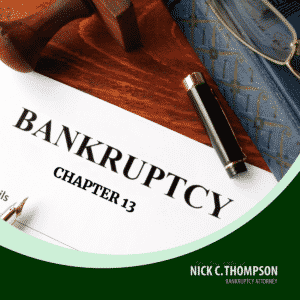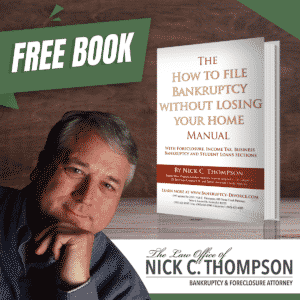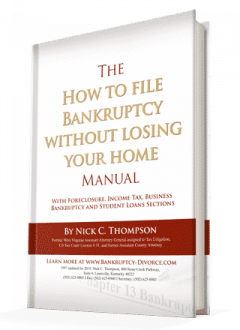Thirty days after the claims bar date, the Debtor or their attorney must file a schedule of allowed claims. If the Debtor fails to review the claims and object, the Debtor will be deemed to have agreed to pay the claim as it was filed, possibly with interest. Plans that are confirmed pay back a percentage to the unsecured claims. This can range from 0% to 100%. When the “Schedule of Allowed Claims” is filed, you can either object to a claim or amend the order of confirmation so that these unsecured claims are paid a higher or lower percentage, and the payments you make will pay out that percentage.
We always ask clients to review claims with us in advance of filing the schedule of allowed claims. Unless you look over the claims with your attorney, a claim will be paid even if it belongs to someone else. Therefore, don’t overlook this important step. Courts presume a claim is accurate unless you object to it. The problem is you may be paying for claims you don’t owe, or you may be paying too much.
Why and How to Review a Chapter 13 Schedule of Allowed Claims

⎆ Review a Chapter 13 Schedule of Allowed Claims.
In a 2017 case Midland Funding, L.L.C. v. Johnson, ___ U.S. ___, 2017 WL 2039159 decided (May 15, 2017), the Supreme Court. The court voted 5-3 to allow debt buyers to file a proof of claim in bankruptcy court on debts that violate the Statute of Limitations. Filing a claim for a debt that is too old to sue does not violate the Fair Debt Collection Practices Act (“FDCPA”). Nor does it violate other protections of the court. However, you can object and permanently discharge these debts.
Your petition should include the following:
- Object to the debt by listing it as past the statute of limitations. Claims are deemed allowed if they are scheduled 11 USC § 501 and 11 USC § 501 unless a party in interest objects.
- Review a Chapter 13 Schedule of allowed claims with your attorney and file an objection to paying the debt if the lender files a claim.
- Interestingly, three of the Supreme Court judges admitted that filing time-barred debts in bankruptcy is “unfair” and “unconscionable.”
- Servicers or debt buyers file improper claims in bankruptcy court in hopes “no one notices they are too old to be enforceable.”
⎆ Debt buyers file false claims because it’s profitable.
Servicers and debt buyers file millions of cases annually in state courts. As a result, most collection attorneys do not review the complaint and supporting documents. The amounts are often overstated. They often have no evidence to support the debt or to prove the plaintiff owns the debt. These debts are bought and transferred electronically from one buyer to another without verification that the accounting is accurate. Debt buyers engage in the same practices in bankruptcy court.
To violate the FDCPA and rules of the court, the claim must be “false,” “deceptive,” or “misleading”. Because the Trustee normally reviews these claims and the debtor doesn’t, the court ruling that filing is sloppy, unenforceable, or contains fraudulent claims is acceptable. The statute of limitations and having bankrupted the debt is an “affirmative defense” 11 U.S.C § 502(b), but you have to assert it or you lose it.
In the Western District of Kentucky, the Trustee does not review a Chapter 13 schedule of allowed claims for time-barred, previously bankrupted, and other improper claims. Including claims means you lose money by paying these claims. Normally, paying extra claims only lowers the amount paid to other creditors who have proper claims. However, in 100% plans, if permitted, the debtor must repay these claims. However, the bankruptcy courts are split as to whether you can sue under the FDCPA in bankruptcy court. Often, you have to bring FDCPA lawsuits in state or federal court. But, the only defense debtors have in many bankruptcy courts is to object to claims.
⎆ Reviving zombie debts by making a payment.
Filing a Bankruptcy normally just stops the clock for the statute of limitations while you are in bankruptcy. However, in Kentucky, making a payment also revives or renews the statute of limitations, making the debt once again enforceable. Any admission you owe the debt may also revive the debt and restart the debt collection process. Do you recall speaking with a debt collector on a recorded line? You didn’t really think it was for “quality assurance,” did you? It was often necessary to get your admission; you owed the debt and restart the statute of limitations (SOL).
What happened after the Midland decision is that debtors must carefully review claims, or these dead or zombie debts will automatically be allowed. Not reviewing your claims makes filing false bankruptcy claims a profitable endeavor. The attorney does not get paid for reviewing claims. It wastes office staff time, so claims are often not reviewed with clients. Instead, attorneys often only copy filed claims and have no idea whether the claims are proper or not. If the debtor does not request a review of the claims, they are simply paid.
⎆ Two problems arise from making payments on zombie debt.
This can later cause two problems. First, the debtor might not get the benefits of a 100% or 70% plan. That’s because, in a 100% plan, you don’t have to file an annual budget or turnover tax refunds. In a 70% plan, you are presumed to be filing in good faith, and the court does not review your plan. Including extra claims dilutes the percentage paid to the unsecured and may require you to increase the plan payment to cover the percentage you proposed to pay in your plan.
Paying these debts through the plan may revive them and make them collectible again for another 6-10-15 years in Kentucky. This is something a debtor doesn’t want to do. For these reasons, you must first review your claims with your attorney. Here is a comprehensive checklist for debtors in Chapter 13 bankruptcy in Western Kentucky.
Resources for Bankruptcy
Louisville Kentucky Bankruptcy Forms
How To Make Chapter 13 Plan Modifications or Conversions • Video
Budgets for Chapter 7 and 13 Bankruptcy
Chapter 7 or 13 Bankruptcy Trustees and the 341 Hearing
How to Sue in Bankruptcy Court
Kentucky Statute of Limitations
If you are thinking about filing bankruptcy, don’t delay because timing is crucial. I am here to help you. So, contact my office right away to start the conversation. Nick C. Thompson, Bankruptcy Lawyer: 502-625-0905.



